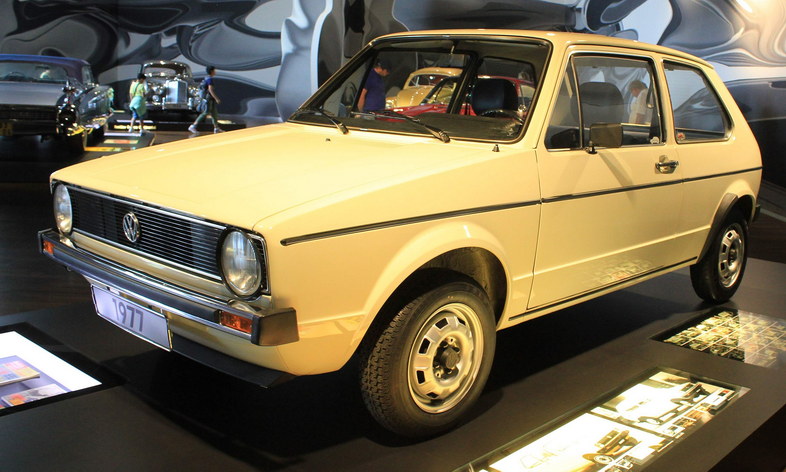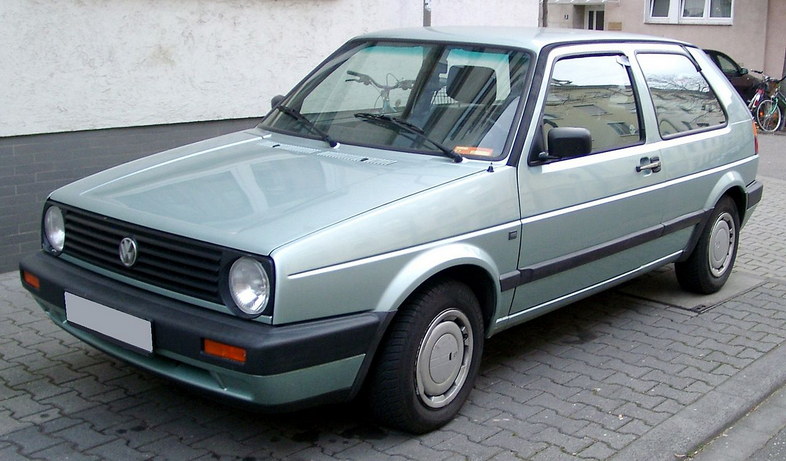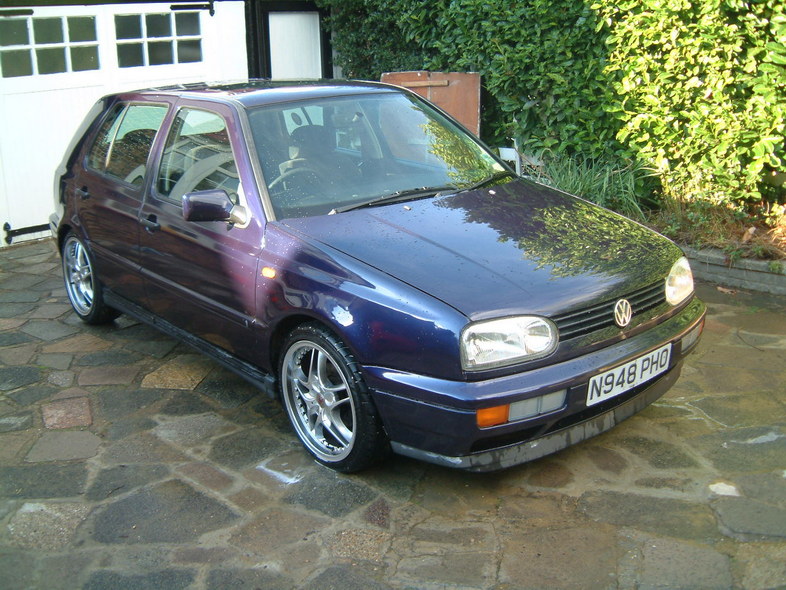If there’s one car model that has left its imprint in the annals of automotive history, it’s undeniably the Volkswagen Golf. When it was first launched in the ’70s, it was more than just a new car; it was the birth of an icon. Over the years, the Golf has evolved, redefining German engineering at every step, with each new model heralding a revolution in design, technology, and performance. In essence, the Golf is not just a car; it’s a testament to the evolution of automotive design itself.
Why has the Volkswagen Golf been such a hit among car enthusiasts and the wider automotive industry? The secret lies in its blend of practicality, performance, affordability, and timeless style. Each version, or ‘Mark,’ of the Golf has its own charm and character, reflecting the zeitgeist of the era it was born into. The Golf doesn’t just adapt to the changing times—it leads the way. This post takes a closer look at the evolution of the Golf from its first model to the latest, focusing on the designers behind them, the unique features they brought to the table, and the legacy they created.
Golf Mk1 (1974-1983)

The Golf Mk1, or first vw golf, burst onto the scene in 1974, a period of significant change in the world. Giorgetto Giugiaro, the legendary Italian designer, sculpted its iconic shape. The crisp lines and sporty hatchback layout were revolutionary, marking a clear departure from the rounded aesthetics of the Beetle. This model quickly established itself as a no-nonsense, dependable workhorse that offered an unbeatable blend of performance and economy.
Underneath the sharp bodywork, the Golf Mk1 was equally impressive. It came equipped with front-wheel drive, an attribute that offered outstanding handling and stability in various driving conditions. Its lightweight and agile nature, coupled with robust mechanicals, ensured the Golf Mk1 was as fun to drive as it was reliable.
The history of the Volkswagen Golf would be incomplete without mentioning the birth of the legendary Golf GTI in 1976. This hot-hatch pioneer was a triumph of German engineering, blending the everyday practicality of the standard Golf with a high-revving 1.6L engine, sport-tuned suspension, and a charismatic red-striped exterior. The GTI created a new niche of sporty, accessible, fun-to-drive cars that continues to influence the automotive industry today.
Golf Mk2 (1983-1991)

And now, we take a time leap to 1983, when the Volkswagen Golf Mk2 burst onto the scene. If the Golf Mk1 lit the spark, it was the Mk2 that truly fanned the flames of the Golf’s popularity. The design responsibility for this iconic vehicle shifted from Giugiaro to Herbert Schäfer, whose work proved instrumental in the evolution of the Golf brand.
The Golf Mk2 was noticeably larger than its predecessor, creating more interior space for occupants and cargo. Its bigger size reflected the growing demand for family-friendly compact cars, marking it as a product of its time. Despite being larger, the Mk2 continued to embody the Golf’s core principles – practicality, reliability, and efficiency.
Schäfer’s design emphasized simplicity and functionality, but it also incorporated a modern appeal. The sleek lines and aerodynamic shape echoed the changing trends in automotive design, making the Mk2 a visually appealing machine.
Additionally, safety was a key focus for the Mk2 Golf. It introduced anti-lock brakes, power steering, and all-wheel drive – a testament to Volkswagen’s commitment to safety.
The Golf Mk2 wasn’t just a car; it became a trusted companion for many. The space, design, performance, and safety aspects all contributed to its widespread appeal. Whether you were a young enthusiast or a parent, the Mk2 was the go-to choice, and it continues to hold a special place in the hearts of many today.
Golf Mk3 (1991-1998)

The 90s ushered in the Golf Mk3, a vehicle that set the trend for future generations. It was larger, more aerodynamic, and carried a host of new features that pushed the boundaries of what was possible in a compact car. This was the first time a Golf was available with a six-cylinder engine and the first Golf to sport a convertible version.
Designed by Herbert Schafer, the Golf Mk3 retained the familiar hatchback shape, but with a softer, rounder design that brought the Golf into the modern age. Safety was a key focus, with the Mk3 being the first vw golf to include front airbags as standard and offering other safety features like ABS and traction control.
Perhaps the most iconic version of the Mk3 was the GTI 16V. This model was an enthusiasts’ dream, offering superb handling, and a lively 2.0-litre, 16-valve engine that cemented the GTI’s reputation as the ‘hot hatch’ to beat.
Golf Mk4 (1997-2003)

In 1997, the Golf took another leap forward with the introduction of the Mk4. This model, designed by Hartmut Warkuß, represented a step change in quality, safety, and technology. The Golf Mk4 was lauded for its high-quality interior, refined ride, and solid construction – elements that were more commonly associated with premium, luxury vehicles.
From a design perspective, the Mk4 moved away from the angular design of its predecessors, adopting a more organic, flowing aesthetic. This was the first Golf to feature a fully galvanized body, enhancing its durability and resistance to rust.
The GTI continued to be a favorite among performance enthusiasts. With the introduction of the 1.8T engine, the GTI offered turbocharged fun for the first time. At the same time, the range-topping Golf R32 model raised the performance bar, featuring a 3.2L V6 engine, all-wheel drive, and a high level of equipment, making it a truly premium performance compact car.
Why do people like VW Golf?
As we journey through the years, it becomes clear how much the Volkswagen Golf Evolution is intertwined with the evolution of automotive engineering itself. Whether it’s the technology, design, performance, or safety features, each generation of the Golf is a snapshot of the state of the car industry at that time.
This is why the Golf holds such a special place in the hearts of car enthusiasts. It’s not just about the individual models – although each one has its charm – but about the journey they represent. The Golf’s evolution mirrors the progress of German engineering, evolving from a straightforward, reliable compact car into a range of vehicles that cater to a broad spectrum of tastes and needs, all while maintaining the core principles that made the original such a hit.
The key to the Golf’s enduring appeal lies in its ability to adapt to the times while staying true to its roots. From the first generation that won drivers over with its practicality and reliability, to later models that delivered ever-increasing levels of performance, luxury and technological sophistication, the Golf has consistently managed to meet and exceed expectations.
As we look to the future, there’s no doubt that the Golf will continue to play a central role in Volkswagen’s lineup. The evolution of the Golf is not yet complete, and we can expect further innovations and improvements as new generations are unveiled.
So, whether you’re an automotive enthusiast, a fan of German cars, or someone who simply appreciates a well-designed, well-engineered vehicle, the story of the Volkswagen Golf is a fascinating tale of evolution and innovation. From its humble beginnings to its current status as one of the world’s most popular and iconic cars, the Golf serves as a perfect example of Volkswagen’s commitment to quality, performance and continual improvement.

